Article
The French Connection II: The Town Named for the Hole in the Wall
Author(s):
The town of Perce is named after the rock with a hole in it. Although it weighs 5 million tons this year, it will weigh less next year after losing a few hundred tons to erosion.
Photography by the authors
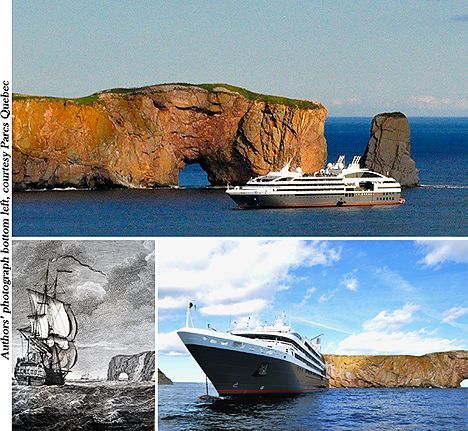
You can see it from any of the high land round town —
in fact it’s hard not to see it: The hole in the sedentary rock that gave Percé its name. After all, the pierced rock runs for 430 meters, 88 meters high and 90 meters wide. It weighs 5 million tons! This year. It won’t weigh that next year because it is losing 200 to 300 tons annually due to erosion. Don’t try and climb it, say all the warnings from Parcs Québec, it’s just too dangerous.
None of the passengers on plan to do that; it’s not on the bucket list of the mostly French and elderly passengers on board this luxury “mega-yacht,” one of five owned by the Compagnie du Ponant, one of the best cruise lines most Americans haven’t heard of. The only cruise line under the French flag, it has kept a low profile up to now.
“The population of Percé is a few thousand in summer and a few hundred in winter,” says our local guide, Chantael Villeneuve, in answer to a question.
She followed her boyfriend, a fisherman from Montréal, four years ago and actually finds the winters in this little town on the east end of the Gaspé Peninsula milder than Montréal’s because the winters here are drier. In summer they get about two weeks when the temperature hits 68 degrees F. Those short summers are gorgeous. The sun rises at 4 a.m. and if you are up on Surprise Hill for the event, the light hits the ocean and is reflected through this incredible hole.
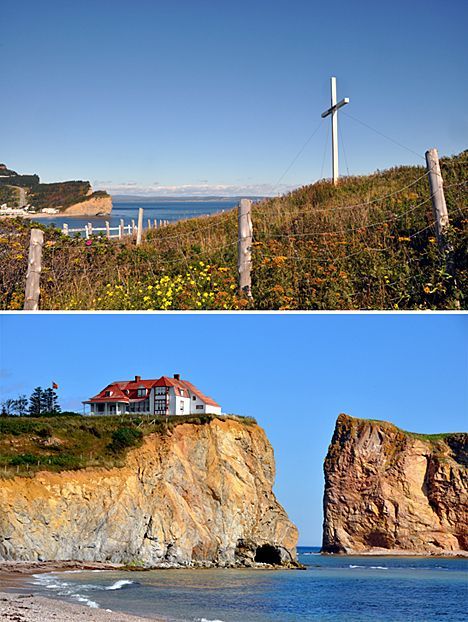
Other natural attractions include the view from Mt. Joli. An easy walk from the beach that takes you up close to the massive cross that, braced with cables against the wind, dominates the harbor.
Another view, but with a bit more of a climb, is the one from Pic de l’Aurore (Peak o’ Dawn), the 800-foot hill that rears over the town to the west and is high enough that visitors obtain a panorama of both the Bay of Gaspé and the Bay of Percé. In the latter bay lies Bonaventure Island with its gatherings of northern gannets numbering as many as 120,000 birds to make it the largest colony of northern gannets in the world.
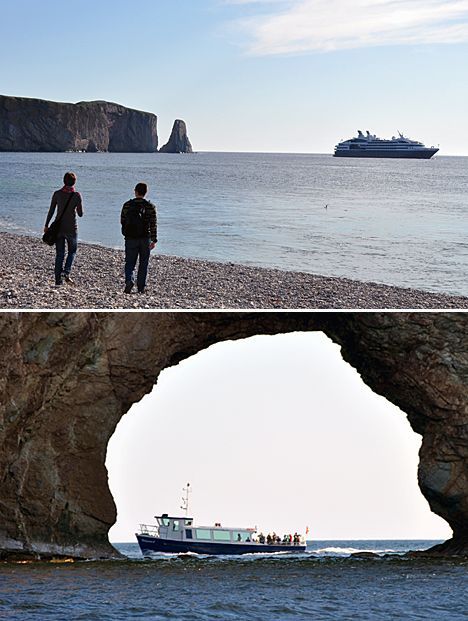
On Percé you are either looking up at the cliffs or looking out to sea. Percé started as a fishing village in the early 1700s, a very successful one, but more recently tourism has become more important with visitors coming for the same reason as several colonies of artists —
the magnificent surroundings. Many of the brightly-colored houses are as attractive as the scenery.
“Wow! Look at those bright rooftops,” says a woman, a fellow passenger. “Color the same as my nail polish!”
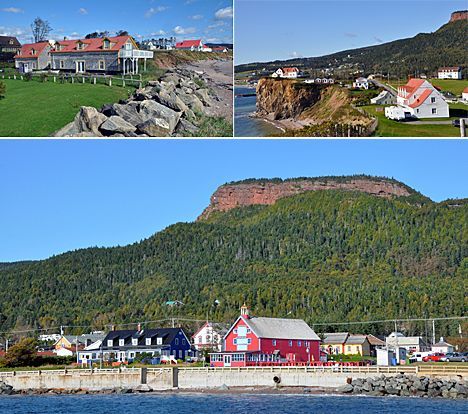
The same brightly painted homes lie scattered along the road west out of town, And at the end of the road, about six miles past the harbor lies the village of Anse à Beaufils with its celebrated 1928 store. The store goes further back in time to a man Charles Robin, born in 1743 in those Channel Islands that lie in the English Channel just north of the coast of France.
Robin became a fishing boat captain in Newfoundland then arrived in Gaspé with 400 barrels of salt. He came to monopolize cod fishing on the Gaspé Peninsula. By 1783 he had formed a company in Percé that extended credit to commercial fishermen so they could buy merchandise in, of course, the Charles Robin Store. He thus created a labor force that was always in his debt. Those indentured servants, 200 in number, could sell their catch only to Robin who, of course, became rich. It was the classic small town “company store” seen so often in many parts of developing North America.

Life changed in the mid-20th century. The seas locally had been over-fished. Businesses failed. A local barber, Gaston Cloutier, bought the store in 1972. He tried to make a go of it but died of a heart attack. He left two sons with such a sense of loyalty they reopened the store in 2001 in his memory as a tourist attraction. That it surely is.
The brothers, dressed in period clothing, receive tourists formally and succeed in taking them back in time to when the store functioned as the center of the community. Visitors are shown the original ledgers that beggared the neighborhood and the patent medicines that cured the world. They gaze at horse harnesses and old gas pumps, then a horse-drawn sleigh and a summer buggy, which, in its day, could be bought for $143.50.
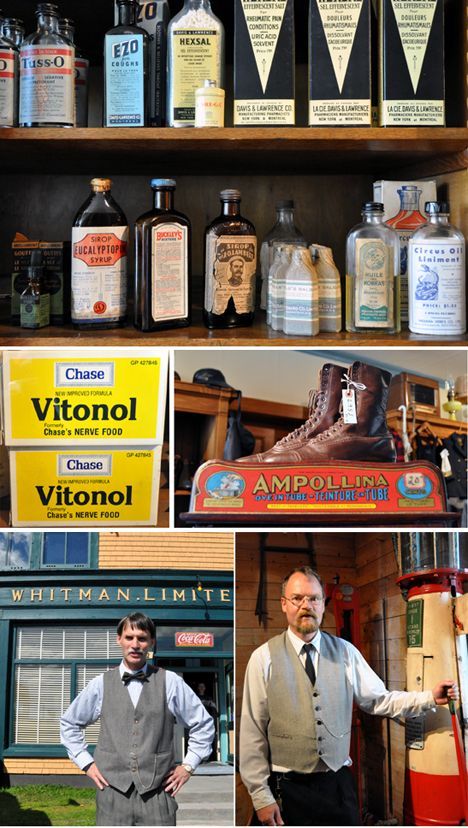
Le Boréal
As we returned to we were still wondering about the strange rock formations. The pier was crowded with locals. They were sightseeing, too, but their gaze was on something more exciting —
our ship, the first time it had sailed the St. Lawrence.
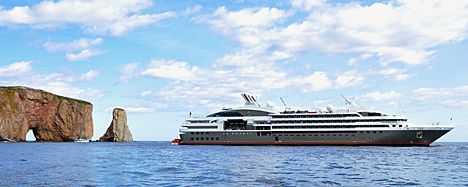
The Man Who Cried Orange: Stories from a Doctor's Life.
The Andersons, who live in San Diego, are the resident travel & cruise columnists for Physician's Money Digest. Nancy is a former nursing educator, Eric a retired MD. The one-time president of the NH Academy of Family Practice, Eric is the only physician in the Society of American Travel Writers. He has also written five books, the last called




